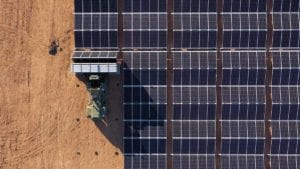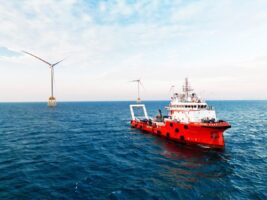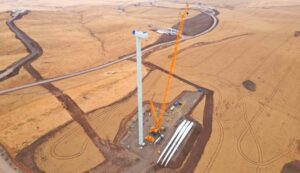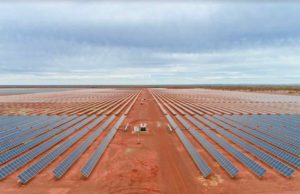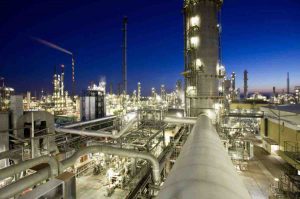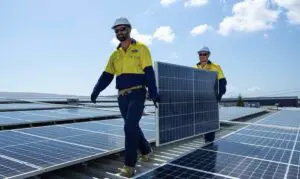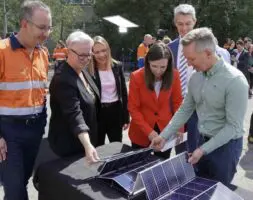Construction has begun on what is being called one of the world’s largest inland floating solar PV systems, a 60MW project on the Tengeh Reservoir in Singapore, which is also one of the first in the world to integrate green technology with water treatment.
Singapore’s PUB (Public Utilities Board) National Water Agency announced on Tuesday that, along with its subsidiary Sembcorp Industries, it had begun construction on the 60MW peak floating solar PV system on Tengeh Reservoir, on Singapore’s northern border with Malaysia.

The 60MW floating solar plant will be integrated with PUB’s water treatment plants and, when completed and operational next year, will generate enough clean energy sufficient to power PUB’s local water treatment plants, offsetting around 6% of its annual energy needs.
The deal to supply power to its own water treatment operations was struck back in May, when Sembcorp announced that it had signed a 25-year Power Purchase Agreement (PPA) for the power generated from the floating solar project.
As a sovereign island city state with a total land area of only 724.2 square-kilometres and heavy urbanisation, Singapore does not have a lot of room for traditional renewable energy generating technologies. Solar energy is Singapore’s most viable renewable energy source, but even then, large-scale deployment of solar panels is difficult due to its dense urban landscape and limited available land.
This leaves rooftops and vertical spaces, as well as PUB’s largest expanse of water bodies and reservoirs, which can now serve a dual purpose of water catchment and electricity generation.
The Tengeh Reservoir floating solar plant is also incorporating new innovations in floating solar PV design and construction. For example, according to PUB, “Every component of the system was carefully designed and selected based on Singapore’s climate conditions in order to maximise energy generation, minimise environmental and water quality impact, and be durable enough to fulfil a service lifespan of 25 years.”
Double-glass solar PV modules were used instead of single-glass modules so as to enhance durability in a wet and humid environment. The PV modules are also supported by certified food-grade quality high density polyethylene (HDPE) floats which are UV-resistant so as to prevent degradation from intense sunlight exposure.
The project is also backed up by a digital monitoring platform including safety cameras, ‘live’ video monitoring, dashboards, and alerts that help to track environmental factors such as wind speed, solar irradiation, and ambient temperature.
The digital monitoring system also detects abnormalities that may suggest potential overheating and fire hazards, which helps pre-empt any issues and allows earlier troubleshooting.
“With this floating solar power plant, which we believe to be one of the largest in the world, PUB takes a big step towards enduring energy sustainability in water treatment,” said Ng Joo Hee, PUB’s Chief Executive. “Solar energy is plentiful, clean and green, and is key to reducing PUB’s and also Singapore’s carbon footprint.”
“As Singapore’s leading renewable energy player, Sembcorp is committed to helping our communities live more sustainably,” said Wong Kim Yim, Sembcorp Industries Group President & CEO.
“This large-scale floating solar platform, which features the deployment of advanced technological and system innovations, will also enhance Singapore’s global position in renewable energy production. We are excited and honoured to partner PUB on this landmark project to provide green power to our nation.”


